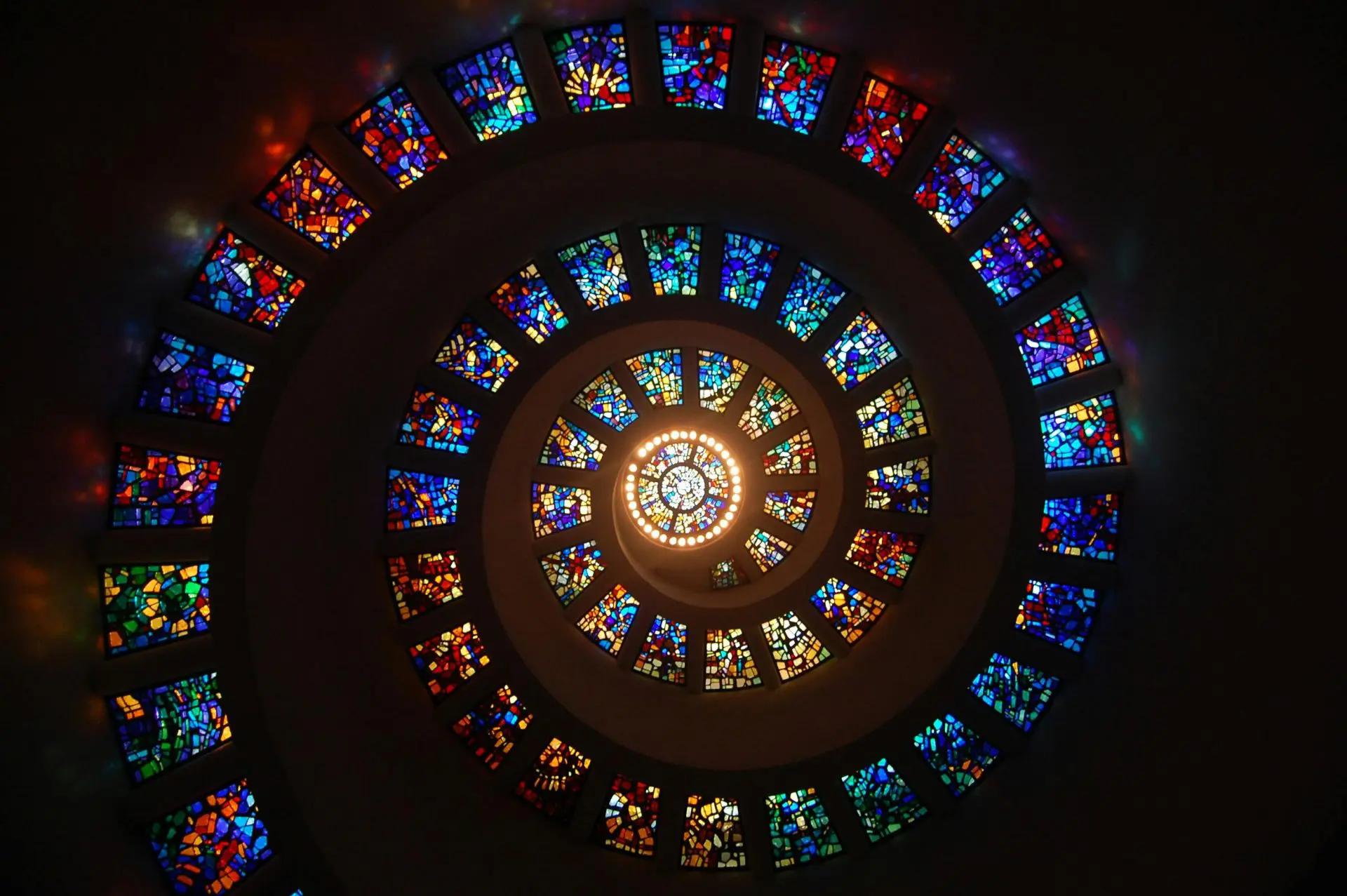Orthodox Christmas: What You Need to Know for 2025

Looking for more amazing products? Check out our online store and explore our collection here! Happy shopping!
Before diving in, please note: This post is for informational purposes only. If you’d like to know more about how we approach topics, feel free to check out our friendly Disclaimer Page.
Hey there, amazing readers! 
We’re committed to delivering quality posts, and your support (even just sticking around despite the ads) means everything to us. So, bear with us, and thanks for helping us keep the good vibes rolling. Now, on to the fun stuff!
TRANSLATE BUTTON AT THE END OF THE ARTICLE
A Quick Overview
Orthodox Christmas is a celebration that brings together communities worldwide, filled with rich traditions, profound spirituality, and delicious food.
For many Orthodox Christians, this festive occasion marks the birth of Jesus Christ, echoing a deep sense of faith and community.
In 2025, the date for Orthodox Christmas falls on January 7.
Understanding the essence of Orthodox Christmas goes beyond just the date; it encompasses an array of customs and beliefs that have developed over centuries.
This article will take you through the joyful journey of Orthodox Christmas, sharing traditions, practices, and the spirit that makes this holiday so special.
Understanding Orthodox Christmas: A Brief Overview
Orthodox Christmas is celebrated predominantly by Eastern Orthodox Christians, who follow the Julian calendar.
This calendar places Christmas on January 7, while most of the Western world observes it on December 25.
This difference stems from various historical and theological developments.
The Orthodox Church emphasizes the Nativity of Jesus Christ, highlighting themes of hope, love, and renewal.
The origins of Christmas celebrations can be traced back to the early Christian communities.
Over time, different cultures adapted the celebration to reflect their customs and lifestyles.
While the core religious significance remains the same, the way people express their faith varies widely.
This adaptability has allowed Orthodox Christmas to flourish in diverse settings, enriching the experience for everyone involved.
Moreover, the festive atmosphere surrounding Orthodox Christmas includes not only the religious aspect but also family gatherings, communal meals, and cheerful carols.
It’s a time for reflection, gratitude, and joy, marked by a deep sense of belonging and togetherness.
As believers prepare their hearts for this sacred day, they also embrace the festive spirit that makes this holiday a beloved occasion for many.
When Is Orthodox Christmas Celebrated in 2025?
In 2025, Orthodox Christmas will be observed on January 7.
It’s essential to note that this date can vary based on the specific traditions of different Orthodox churches.
For instance, some communities may celebrate Christmas Eve on January 6, marking the occasion with evening services and family gatherings.
When planning for Orthodox Christmas in 2025, be mindful of regional differences.
Countries like Russia, Greece, Serbia, and Ethiopia all have unique customs and may celebrate the holiday in distinctive ways.
Generally, festivities begin on Christmas Eve, which is often a time for family to come together for a special meal and religious observance.
In anticipation of this joyous occasion, many Orthodox Christians will also observe Advent, a period of fasting and reflection that lasts for several weeks leading up to Christmas Day.
This time of preparation adds depth to the celebrations, allowing individuals and families to focus on their faith and spiritual growth.
Unique Traditions: How Different Cultures Celebrate
When it comes to celebrating Orthodox Christmas, each culture adds its own flavor to the festivities.
Here are some fascinating traditions from various countries:
Russia: In Russia, Christmas celebrations often begin on January 6 with a feast featuring "sochivo," a dish made from wheat and honey.
Many attend a midnight service, and it’s common to see families share stories and exchange blessings.
Greece: Greek Orthodox Christians hang a wooden or metal "Karavaki," a small boat decorated with lights, symbolizing the importance of the sea in Greek culture.
On Christmas Eve, families attend church services and enjoy a festive meal featuring turkey or pork.
Serbia: In Serbia, the holiday begins with "Badnje Veče," Christmas Eve, where families gather to cut an oak tree branch and bring it home, symbolizing the arrival of Christ.
The evening is filled with carols and traditional foods.
Ethiopia: Ethiopian Orthodox Christians celebrate Christmas with a feast of injera and doro wat, a spicy chicken stew.
Their Christmas Eve service, known as "Gena," is filled with vibrant music and dance.
These traditions reflect a beautiful tapestry of faith and culture.
No matter where Orthodox Christians are located, the core values of love, unity, and spiritual significance remain central to the celebrations.
Preparing for Christmas: Advent and Fasting Practices
Advent, which begins on November 15 in the Orthodox tradition, serves as a time for preparation and reflection leading up to Christmas.
During this period, many Orthodox Christians follow fasting practices to help them focus on their spiritual lives.
The fast encourages moderation and self-discipline.
Typically, the fasting period involves abstaining from animal products, such as meat, dairy, and eggs.
Some individuals may also choose to limit their consumption of oil and wine.
The fasting isn’t just about food; it’s a time for believers to engage in prayer, repentance, and acts of kindness.
Many churches offer special services or programs during Advent.
These gatherings often include readings from the scriptures, discussions about the significance of Christ’s birth, and community outreach activities.
This time of preparation enhances the anticipation of Christmas and allows individuals to grow closer to their faith and community.
As we approach Christmas, families often decorate their homes and prepare traditional dishes.
The atmosphere filled with excitement and hope is palpable, setting the stage for the joyous celebrations that follow.
Festive Foods: Delicious Dishes to Enjoy on Christmas
Food plays a significant role in Orthodox Christmas celebrations.
The meals served during this time reflect the culture and traditions of the community.
Here are some delightful dishes that you might encounter:
Borscht: This hearty beet soup is a staple in many Eastern European homes, often served with sour cream and dill.
It’s a comforting dish that warms the heart during cold winter months.
Baklava: A sweet pastry made of layers of filo dough, filled with nuts and honey.
This treat is popular in Greek and Middle Eastern celebrations and is often enjoyed with coffee or tea.
Kutia: A traditional Ukrainian dish made from wheat, honey, and poppy seeds.
It’s often served during the Christmas Eve meal and symbolizes prosperity and abundance.
Sarma: Stuffed cabbage rolls filled with rice and meat, known as sarma, are commonly found on Serbian Christmas tables.
They represent warmth and comfort, perfect for family gatherings.
Honey Cake: Many cultures incorporate honey into their desserts, symbolizing sweetness and the joy of life.
A honey cake, rich and moist, often graces the dessert table.
These festive foods not only satisfy the palate but also connect families to their heritage and traditions.
Sharing meals becomes an essential part of the celebration, fostering love and togetherness.
The Significance of the Nativity in Orthodox Faith
At the heart of Orthodox Christmas celebrations is the Nativity of Jesus Christ.
This event represents the divine miracle of God becoming human, embodying love and compassion.
The Nativity story holds profound significance for Orthodox Christians, emphasizing themes of humility, hope, and salvation.
The Nativity is celebrated not only through services at church but also through family gatherings, where the story is shared and reflected upon.
Many families read passages from the Gospels that recount the birth of Christ, reminding themselves of the love and grace that this event signifies.
Nativity icons, often displayed in homes and churches, depict the scene of Christ’s birth.
These icons serve as visual reminders of the sacredness of the event and encourage believers to express their faith through prayer and devotion.
Additionally, the Nativity fosters a sense of unity within communities.
As families come together to celebrate, they engage in acts of charity and kindness, reflecting the teachings of Christ.
The Nativity message encourages individuals to extend love and support to those in need, reinforcing the spirit of Christmas.
Joyful Music: Traditional Carols and Their Meaning
Music is an integral part of Orthodox Christmas celebrations.
Traditional carols, often sung in churches and homes, encapsulate the spirit of the season.
These carols reflect the joy of Christ’s birth and are often performed in communal gatherings.
Each culture has its own set of carols, with lyrics that express love, hope, and gratitude.
For example, in Greece, the "Kalanda" is a popular Christmas carol sung by children as they go door-to-door, spreading cheer and collecting treats.
In Russia, "Troika" and "God is Born" are traditional carols that celebrate the Nativity.
Singing these carols helps strengthen community bonds, as people gather together to share their voices and joy.
Caroling also serves as a way to pass down traditions from one generation to the next.
Singing these timeless melodies fosters a sense of belonging and connection to faith, reminding everyone that the spirit of Christmas transcends time and place.
Iconography and Decorations: A Glimpse into Symbolism
Orthodox Christmas is rich with symbolism, particularly in its use of icons and decorations.
Icons of the Nativity are prevalent in homes and churches, depicting Christ’s birth and serving as focal points for prayer and meditation.
Decorating the Christmas tree is another cherished tradition.
While the specific customs may vary, many families adorn their trees with lights, ornaments, and even natural elements like fruits, symbolizing life and abundance.
In addition, many Orthodox Christians decorate their homes with symbols of the season, such as stars, angels, and nativity scenes.
These decorations are not just for show; they remind families of the spiritual significance of the holiday and invite discussions about faith and tradition.
Creating an environment filled with festive decorations fosters warmth and joy.
It sets the stage for gatherings and celebrations, where everyone can come together in appreciation of the holiday’s message.
Christmas Services: What to Expect at the Church
Attending church services is a central part of Orthodox Christmas celebrations.
The services are typically filled with rich liturgical traditions, including chanting, prayers, and communion.
On Christmas Eve, many congregations hold a midnight liturgy, welcoming in Christmas Day with reverence and joy.
The atmosphere is often both solemn and celebratory, as believers reflect on the miracle of Christ’s birth.
During the service, you can expect to hear readings from the scriptures that recount the Nativity story.
The priest may give a sermon emphasizing the significance of the birth of Christ and encouraging the congregation to embody the spirit of love and compassion.
After the service, it is common for congregants to greet one another with warmth, sharing blessings and good wishes for the season.
This sense of community is especially meaningful, as it reinforces the idea that Christmas is a time for togetherness and unity.
Family Gatherings: Customs for Celebrating Together
Family gatherings are at the core of Orthodox Christmas celebrations.
After attending church, many families come together to share a festive meal, emphasizing unity and love.
During these gatherings, families often share stories from their lives, reflect on the past year, and express gratitude for their blessings.
It’s a time for reconnecting, strengthening family bonds, and creating cherished memories.
Traditionally, families may include certain customs that hold personal significance.
For example, some families start the meal with a prayer, expressing thanks for the food and the company.
Others might have unique dishes that have been passed down through generations, making the meal even more special.
Children often play a significant role during these gatherings, participating in games, singing carols, or even performing skits related to the Nativity.
Their joy and enthusiasm bring an extra layer of delight to the celebrations.
Gifts and Greetings: Spreading Cheer on Christmas
Gift-giving is a joyful aspect of Orthodox Christmas.
While it may not be as central as in Western traditions, many families exchange presents to celebrate the occasion.
Gifts often symbolize love and appreciation, reinforcing connections among family and friends.
In the lead-up to Christmas, many people take time to create thoughtful gifts that reflect the recipient’s interests and needs.
This personalized touch underscores the spirit of giving that is so essential during the holiday season.
When it comes to greetings, a common phrase exchanged among Orthodox Christians is "Christ is born!" The response is "Glorify Him!" This exchange encapsulates the joy of the season, reminding everyone of the reason for the celebration.
As we navigate through the holiday season, sharing good wishes and blessings fosters a sense of community and love.
Whether through cards, emails, or in-person interactions, spreading cheer can brighten the day for many.
Enjoying Christmas Spirit: Activities for Everyone in 2025
As we approach Orthodox Christmas in 2025, there are countless ways to participate in the festivities and embrace the holiday spirit.
Here are some engaging activities for everyone to enjoy:
Attend Church Services: Participate in the various services leading up to Christmas, including midnight liturgies and Christmas Day celebrations.
Volunteer and Give Back: Engage in acts of kindness by volunteering at local charities, food banks, or shelters.
This embodies the spirit of Christmas and reflects the teachings of Christ.
Host a Caroling Night: Gather friends and family for a night of singing traditional carols around the neighborhood.
It’s a great way to spread joy and connect with the community.
Prepare Traditional Dishes Together: Involve the entire family in cooking traditional Christmas meals.
It’s an excellent opportunity to bond and create lasting memories.
Create Nativity Scenes: Set up a nativity scene at home, allowing family members to contribute by making or decorating figurines.
This activity fosters creativity and reinforces the holiday’s spiritual significance.
Share Stories: Take time to share stories or readings about the Nativity.
Discuss the meaning behind the traditions and the values that underlie them.
Participate in Community Events: Look for local events celebrating Orthodox Christmas, such as festivals, fairs, or concerts.
These gatherings can enhance the community spirit.
Make Handmade Gifts: Create handmade gifts that express your love and appreciation for family and friends.
Personal touches make gifts even more special.
Engage in Family Traditions: Embrace your family’s unique customs and traditions, honoring the practices that make your Christmas celebrations meaningful.
Reflect and Pray: Set aside time for personal reflection and prayer, focusing on the spiritual aspects of the holiday.
This can deepen your connection to the season.
These activities are perfect for bringing family and friends together, ensuring a delightful and fulfilling Orthodox Christmas celebration in 2025.
Conclusion
Orthodox Christmas is a celebration steeped in faith, family, and tradition.
As we prepare for this beautiful occasion in 2025, let’s not forget the heart of the holiday: love, compassion, and togetherness.
From attending church services to sharing festive meals and participating in cherished customs, there are countless ways to immerse ourselves in the spirit of Christmas.
Whether you’re participating in age-old traditions or creating new ones, the essence of Orthodox Christmas remains the same.
It’s a time for reflection, gratitude, and joy, reminding us of the importance of faith in our lives.
So, as we look forward to January 7, let’s embrace the warmth and cheer that come with this beloved holiday.

The Enlightenment Journey is a remarkable collection of writings authored by a distinguished group of experts in the fields of spirituality, new age, and esoteric knowledge.
This anthology features a diverse assembly of well-experienced authors who bring their profound insights and credible perspectives to the forefront.
Each contributor possesses a wealth of knowledge and wisdom, making them authorities in their respective domains.
Together, they offer readers a transformative journey into the realms of spiritual growth, self-discovery, and esoteric enlightenment.
The Enlightenment Journey is a testament to the collective expertise of these luminaries, providing readers with a rich tapestry of ideas and information to illuminate their spiritual path.
Our Diverse Expertise
While our primary focus is on spirituality and esotericism, we are equally passionate about exploring a wide range of other topics and niches 

To ensure we provide the most accurate and valuable insights, we collaborate with trusted experts in their respective domains 
Our blog originally focused on spirituality and metaphysics, but we’ve since expanded to cover a wide range of niches. Don’t worry—we continue to publish a lot of articles on spirituality! Frequently visit our blog to explore our diverse content and stay tuned for more insightful reads.
Hey there, amazing reader! 
Check out our store here and take a peek at some of our featured products below! Thanks for being awesome!










